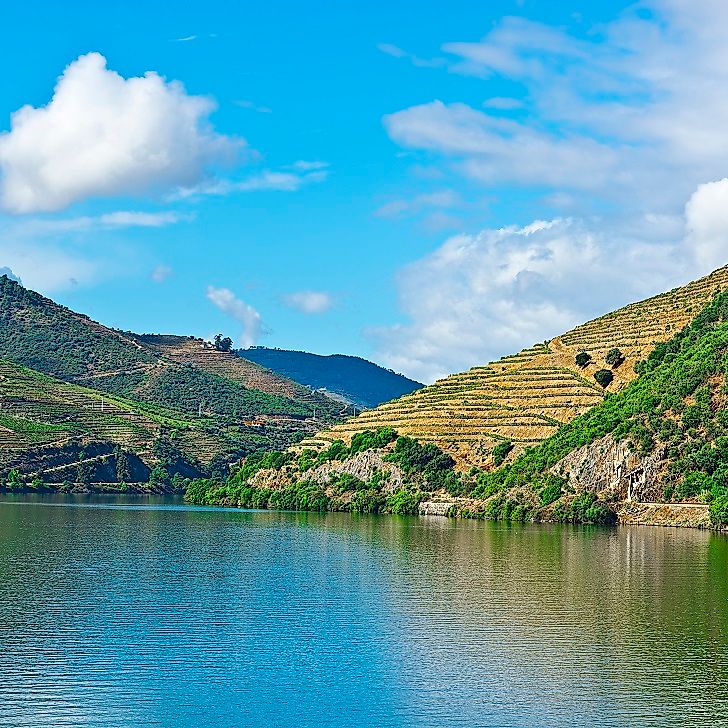The Douro River Of Portugal And Spain

5. Description
The Douro River is one of the most economically and hydrologically important rivers for both Portugal and Spain. It flows out of the Sierra de Urbion in Soria Province, Spain and continues its way past north-central Spain. It then enters Portugal flowing out to the Atlantic via Porto, Portugal. The Douro spans a length of 557 miles from source to the Atlantic. It is the third longest river among those in the Iberian Peninsula. Its waters have been used for irrigation and hydroelectric power. The most notable structure on the river is the Dom Luis I Bridge in Porto at 591 feet long, which is seen spanning both banks of the Douro.
4. Historical Role
In Spain, the river is called Duero. The name Douro may have come from the Roman word, Durius, a Roman god. In ancient times, the Romans occupied the city of Porto and the river was represented as a god. In Portugal, the river flows past the Douro Valley, known as a viticultural (grape-producing) area of Porto where since the 18th Century, port wine has been produced for the local and export markets. This made the Douro River an important waterway where port wine is transported to be stored or as export. In the 1960s through 1980s, several dams were constructed to provide hydroelectric power which also widened the river.
3. Modern Significance
In the 2000s, the river thrived as a cruise ship destination and stopover for its winery tours and port wine tasting events. Tourism helped changed the region. The river is also a source of irrigation. Its waters have increased the yield of almond and olive plantations along its length. Port wine is made in the numerous quinta winery estates along the valley. The vineyards around São João da Pesqueira and Pinhão represent the port wine regions of Porto. There are 15 dams and numerous locks along the length of the Douro River from Spain to Porto, Portugal. These dams and locks make the river more navigable.
2. Habitat and Biodiversity
In Porto, the riverbanks act as one of its most important habitats where amphibians are found. Several other habitats include streams, beaches, coastal zones, cliffs, urban woodlands, and agricultural lands. Flora are of the maritime pine woodlands type which are getting scarce today due to urbanization. However, new plantings include Sweetgum, Crape Myrtle, Weeping Golden Willow, Tuliptree, and Portuguese Laurel. Fauna are typical of the south of France, Africa, and the Iberian peninsula. The avian population includes Eurasian Jay, Eurasian Hoopoe, and the Common Kingfisher. The Swallowtail butterfly, which is the largest butterfly in Portugal, is also found in the region.
1. Environmental Threats and Territorial Disputes
The Albufeira Convention was signed by Spain and Portugal in 1998 as an understanding to share the rivers of Douro, Guadiana, and Tagus. This agreement also provides for the protection of the sustainable use of water resources according to the framework of the EU and International law. The Alto Douro Wine Region in Portugal is under the protection of the World Heritage Center of UNESCO. One major concern is in regard to the Foz Tua Hydroelectric Dam project. The steps considered involve the operational stability of the said dam. The future construction of large infrastructure projects in the area are not permitted within the boundaries of the property, and they may be a need to suspend further excavation on the navigation channel until additional hydraulic studies are carried out.











